There are plenty of reasons why the Toyota Tacoma remains the king of the midsize pickup market despite the best efforts of competitors like Honda, Nissan, Ford, Chevrolet and GMC. To start with, Toyota offers the “Taco” in all manner of different trims and configurations, including the new-for-2024 Trailhunter.
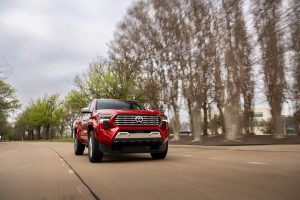
The hybrid version of the 2024 Toyota Tacoma adds nearly another 100 hp than the new turbo engine – and 70% more torque than the old V-6.
Another big change this year is the addition of a first-time hybrid drivetrain. Its arrival should come as no surprise, of course. With a first-ever hybrid version of the 4Runner also on tap, the Japanese giant will count 19 separate gas-electric models in its U.S. line-up. Only the little 86 and sporty Supra will remain available solely in gas-powered form.
Power and fuel economy
While the new Tacoma Hybrid certainly offers a welcome advantage in terms of mileage, that’s far from the only plus it brings. Gone are the days when fuel economy was the only thing Toyota cared about with hybrid technology. Just look at the substantial boost in power the latest-generation Prius delivers.
So it is with the Tacoma Hybrid which makes the outgoing V-6 version of the pickup look positively tame.
(Click Here to check out our review of the gas-only 2024 Toyota Tacoma line.)

The i-Force Max hybrid engine is available on a variety of new Tacoma trims, including the Trailhunter.
Like all trims, it starts out with a turbocharged 2.4-liter inline-four gas engine. In base trim it makes a reasonable 228 horsepower. But Toyota has retuned the engine and paired it with a single, 48-horsepower electric motor – integrated into the truck’s 8-speed automatic. It draws power from a 1.87-kilowatt-hour nickel-metal hydride battery pack. The sum of those new parts? A package making a much more peppy 326 hp in higher trims.
If that’s not impressive enough, the Tacoma hybrid drivetrain now makes a stump-pulling 465 pound-feet of torque. That’s a full 75% increase over the old V-6. Now add the fact that this iForce Max options also delivers an EPA-rated 24 mpg combined. That’s as much as 6 mpg better than the old six-banger, and anywhere from 4 to 6 mpg over the old inline-4, according to the feds.
Options, options options
The i-Force Max is standard equipment on the new Tacoma Trailhunter edition, and an option on the TRD Sport, TRD Off-Road and Limited. On all models, 4-wheel-drive is standard, though it’s part-time on TRD and Trailhunter, which get an electronically controlled 2-speed transfer case.

Tacoma hybrids come only with the double cab body and 5-foot bed – except on Trailunter which offers a 6-foot bed option.
On the TRD Pro and Trailhunter, meanwhile, there a front stabilizer bar disconnect, an option on the TRD Off-Road. At the top of the line, the Limited hybrid also gets a locking center differential and an adaptive variable suspension system.
What’s curious, however, is Toyota’s decision to only offer the hybrid drivetrain with the double cab body. And all versions come with a five-foot bed but for the Trailhunter which has an optional 6-footer.
More Toyota News
- First Drive: 2025 Toyota Camry – Hybrid Takes it to a New Level
- First Look: 2024 Toyota 4Runner – More Power, More Features, More Options
- A Week With: 2024 Toyota Prius: Winning Over the Skeptics
Updated design
At first glance, the new truck might not look all that different from the outgoing model. But take a closer look.
In all its versions, the 2024 Toyota Tacoma has a lot going for it, starting with a ground-up makeover that sees it migrate to the TNGA-F platform, the same architecture as the full-size Tundra. It gains 4.5 inches of wheelbase, about 2.5 inches in track and another two inches in height. Along with the new i-Force Max there are plenty of new and intriguing features, like TRD Pro’s IsoDynamic seats and an assortment of advanced safety and comfort technologies.
The outgoing Tacoma was anything but a tech showcase. Toyota has clearly wanted to catch up with the 2024 truck. To start with, base models now feature a 7-inch digital gauge cluster, higher trims getting a 12.3-inch display. Base models come with an 8-inch infotainment touchscreen, but a 14-inch package is available as standard or option, depending upon the trim. Toyota now has added its Alexa-like voice assistant, the Audio Multimedia system, as standard fare across the board.
There are plenty of new storage nooks inside all the new versions, though the Hybrid does sacrifice a bit of space in the bins under the back bench. That’s due to intrusion from its lithium-ion battery pack.
Out on the trail
I got my first chance to drive the Tacoma Hybrid in Limited form at the 5,500-acre Calamigos Ranch near Malibu, California, following up with several other versions during a drive at the only slightly smaller Vogt Ranch east of San Diego.
Despite the modest amount of weight added by the motor and small battery pack, there was little impact in terms of driving dynamics. As always, it all depends on the specific package. The TRD’s increased ground clearance – at 11 inches – and improved wheel articulation were helped it creep across a big rock pile as if it were little more than the sort of bumps we Michigangers are used to on our freeways.
After switching over to the Limited hybrid I expect to see a sizable share of buyers opt for the I-Force Max package. Torque comes on quickly and smoothly and is likely to change the way many people think of a gas-electric drivetrain.
As with the pure gas models, each Tacoma hybrid package has its own, distinctive characteristics. On the whole, the gas-electric package only enhances their capabilities. The way the torque from the electric motor comes on at low RPMs is a real plus when off-roading.
Pluses and minuses
I’m looking forward to getting more time in Tacoma Trailhunter hybrid which targets overlanders. It adds features such as ARB’s Old Man Emu position sensitive 2.5-inch forged monotube shocks with rear external piggyback style remote reservoirs, a steel rear bumper, rear recovery points, and a bed utility bar with removeable panels. It also adds two inches of ground clearance up front and 1.5 in the rear, while riding 33-inch Goodyear Territory R/T tires, a trail exhaust tip, a high-mount air intake on the passenger side, and rock rails.
But there can be some modest drawbacks to the hybrid option. Towing capacity, for one thing, drops 500 pounds, to a still useful 6,000, due to the added mass of the hybrid system. Payload capacity, meanwhile, is down to 1,709 lbs.
More tech
Wireless charging, as well as wireless Apple CarPlay and Android Auto are available as options or standard, depending upon the trim. And there are plenty of USB-C ports, including two 45-watt plugs in the center console.
The 2024 Tacoma also gets the latest Toyota Safety Sense 3.0 suite of advance driver assistance systems across the line-up, including features like pre-collision warning with pedestrian detection, lane departure alert, road sign assist and other features. But there are a handful of desirable features, such as blind-spot detection, available as optional upgrades.
Wrap-up
It’s been more than a quarter-century since Toyota launched its first-generation hybrid-electric vehicle. It’s learned a lot since then – all the more apparent this year with all the various HEV configurations it offers across a line-up of 19 different models.
The 2024 Toyota Tacoma makes good use of the automaker’s latest, since-motor configuration. Its quick and torquey – even though it does lose a bit of towing capacity. Depending upon the model, it adds to off-road capabilities and it’s even more confidence building than the rest of the fourth-generation pickup family when you’re out on public roads.
There is a penalty when it comes to cost. As we’ve seen across the auto industry, prices have risen sharply since the gen-3 Tacoma made its debut. That’s especially apparent with the new Tacoma hybrid which starts at $47,795 in the TRD Sport. The TRD Pro pushes that to $65,395 – $1,000 more than the new Trailhunter. (All figures include delivery fees.)
Those numbers are likely to be a little too rarified for many Tacoma buyers. But, for the money, it’s hard to deny the refinement of the new hybrid drive option.

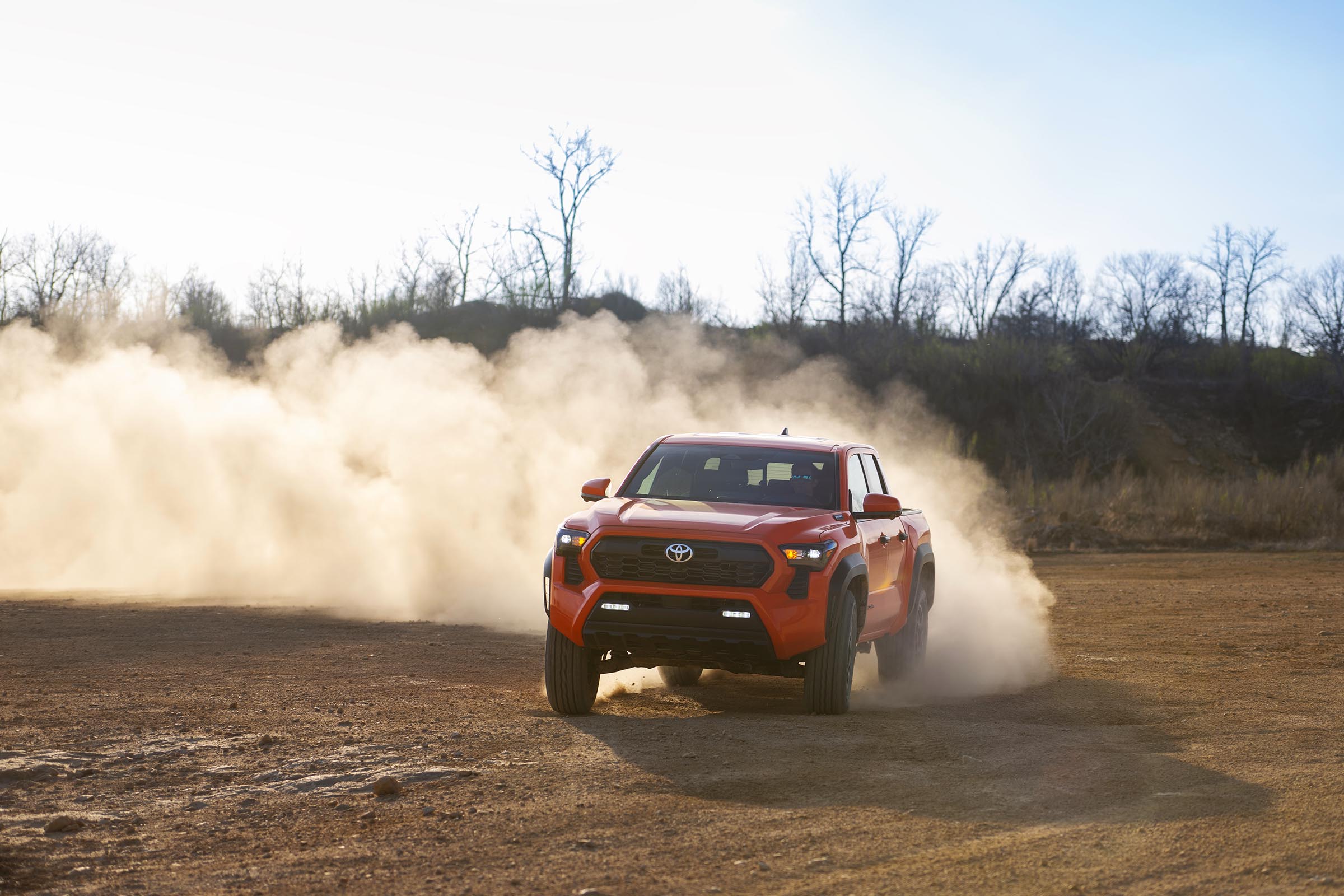
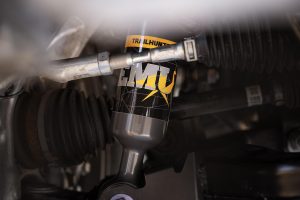

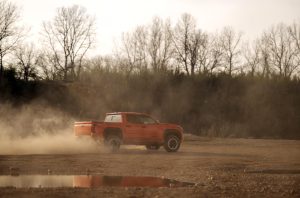

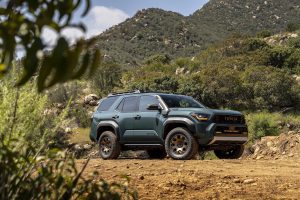


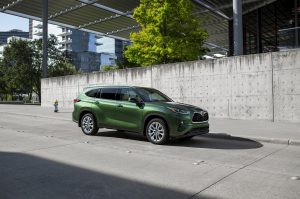


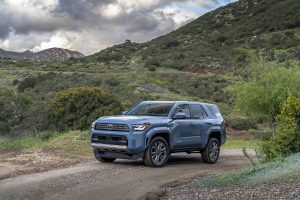

Reminds me of an old line, “If you want economy, you’ll have to pay for it.”